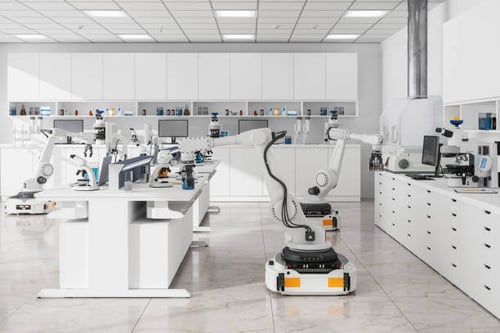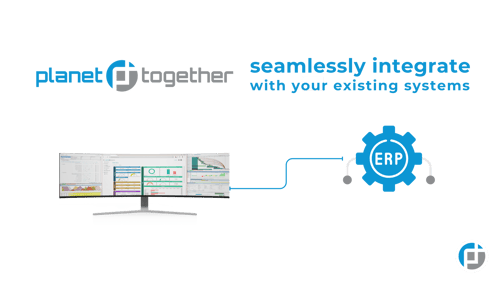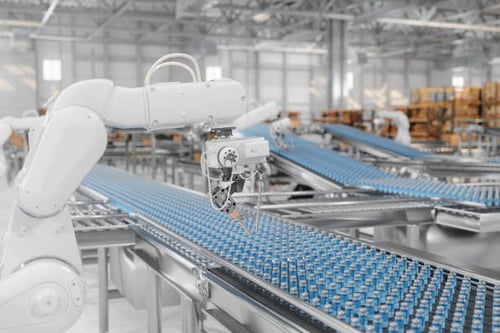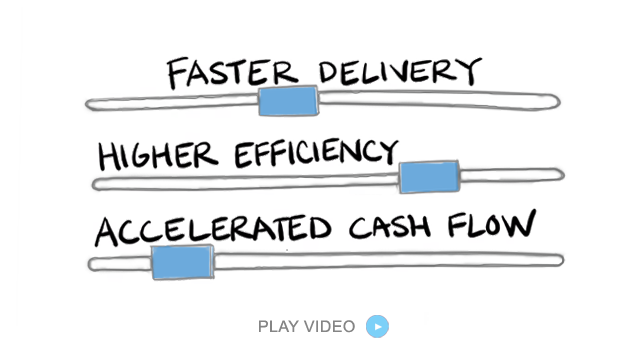Redefining Medical Manufacturing: The Role of Robotics, Automation, and Integrated Planning Systems
The medical manufacturing industry stands at the intersection of precision, regulation, and rapid innovation. In this highly demanding environment, Robotics and Automation (R&A) are no longer futuristic concepts—they are essential tools for meeting strict compliance standards, reducing human error, and responding to market pressures. For Manufacturing IT Managers, the integration of automation technologies with enterprise systems such as SAP, Oracle, Microsoft, Kinaxis, or Aveva—and advanced planning systems like PlanetTogether—is critical to unlocking new levels of efficiency, visibility, and scalability.
This blog explores how Robotics and Automation are reshaping medical manufacturing and how IT leaders can leverage integrated systems to harness their full potential.

The Rise of Robotics and Automation in Medical Manufacturing
The adoption of robotics and automation in medical device and pharmaceutical production has accelerated in recent years, driven by:
Demand for consistent quality and precision
Regulatory pressure to minimize human error
A growing skills gap in the labor market
The need for scalable and flexible production lines
Robotic arms in assembly, automated guided vehicles (AGVs) in material transport, and smart inspection systems powered by AI are now commonplace in advanced facilities. Automation isn’t just about replacing labor—it’s about augmenting capabilities to meet the rigorous standards of the medical sector.
But the real power of these systems is unleashed when they’re integrated—not just within the shop floor, but across the entire manufacturing ecosystem.

Why Integration Matters More Than Ever
Automation on the factory floor is only as effective as the data that powers it. Without integration, robotics systems operate in silos, unaware of upstream supply chain changes or downstream demand shifts. That’s where planning and scheduling solutions like PlanetTogether and enterprise platforms like SAP, Oracle, Microsoft, Kinaxis, and Aveva come into play.
By connecting automation systems with enterprise-level planning, IT managers gain the ability to:
Optimize production schedules in real-time
Respond dynamically to supply chain disruptions
Balance resource utilization across robotic and human labor
Maintain a digital thread from planning to execution to compliance
Let’s break down how these integrations can specifically benefit medical manufacturing.
Enhanced Scheduling with PlanetTogether APS
Robotics require finely tuned production schedules to operate at peak efficiency. PlanetTogether Advanced Planning and Scheduling (APS) software enables real-time visibility into capacity, material availability, and labor constraints—key factors for orchestrating complex automation workflows.
When integrated with an ERP system like SAP or Oracle, PlanetTogether automatically pulls in up-to-date data such as inventory levels, production orders, and delivery deadlines. This creates a synchronized schedule that ensures:
Automated equipment is never under- or over-utilized
Maintenance windows for robotic systems are built into the schedule
Changes in demand are reflected immediately in production priorities
For instance, if Kinaxis or SAP IBP flags a sudden spike in demand for a specific medical device, PlanetTogether can reschedule robotic operations to prioritize that product—without human intervention.
Closed-Loop Feedback with Microsoft and Aveva
While ERP and planning systems provide the brain of operations, integration with platforms like Microsoft Azure IoT or Aveva System Platform enables a closed-loop connection to the shop floor.
Sensors and controllers embedded in robotic systems can feed real-time performance data into these platforms. This allows IT managers to:
Monitor production KPIs such as cycle time and OEE
Trigger alerts when deviations from standard operating conditions occur
Feed performance data back into planning systems for continuous improvement
When PlanetTogether receives real-time status updates from Aveva or Microsoft, it can adjust production schedules on the fly—ensuring robotic resources are used effectively and without unnecessary downtime.
Enabling Smart Maintenance and Compliance
Medical manufacturing is highly regulated. Robots must not only be efficient—they must operate within strict quality and traceability frameworks.
Through integration, Manufacturing IT Managers can deploy predictive maintenance algorithms that track the health of robotic systems. These tools:
Analyze data to predict potential failures
Schedule maintenance during low-impact windows
Automatically document maintenance events for audit purposes
Integration with systems like Oracle Cloud SCM or SAP S/4HANA ensures that compliance data is captured and accessible throughout the organization.
PlanetTogether can then factor maintenance requirements into its scheduling algorithm—keeping production running without compromising on quality or safety.
Agility and Resilience Through Kinaxis and PlanetTogether
Robotics bring speed, but agility comes from supply chain awareness. When demand signals change, or when suppliers face disruption, Manufacturing IT needs systems that respond in real time.
Kinaxis RapidResponse offers scenario modeling and supply chain visibility, which—when connected to PlanetTogether—allows planning to cascade all the way down to the robotic equipment level.
Here’s how that might look in practice:
Kinaxis detects a supplier delay for a key component.
The delay is shared with PlanetTogether.
PlanetTogether reschedules robotic operations to focus on alternate product lines.
The change is sent to SAP or Oracle, updating fulfillment expectations.
This level of responsiveness transforms robotics from rigid executors to agile assets, capable of adapting to business needs instantly.
Challenges and Best Practices for IT Managers
While the benefits of integration and automation are immense, the path to realizing them isn’t without challenges. IT leaders in medical manufacturing must navigate:
Legacy systems that resist integration
Data silos between planning, execution, and compliance systems
Cybersecurity risks associated with connected robotics
Training gaps for operators and planners using advanced systems
To overcome these hurdles, IT managers should consider the following best practices:
Start with pilot integrations: Focus on high-impact areas like scheduling or maintenance before expanding system-wide.
Invest in interoperability: Choose vendors and tools that offer open APIs and robust middleware.
Standardize data models across systems to facilitate real-time communication.
Build cross-functional teams to align IT, production, quality, and supply chain goals.
The Future: AI-Augmented Automation and Autonomous Planning
As robotics become more advanced and planning systems more intelligent, the future of medical manufacturing lies in autonomous operations—where systems make decisions with minimal human input.
PlanetTogether, when enhanced with AI and integrated into ecosystems like Microsoft Azure or SAP Business Technology Platform, can evolve into an autonomous planner that:
Learns from past production performance
Adjusts schedules based on real-time machine learning insights
Optimizes for multiple KPIs (cost, quality, speed) simultaneously
This will enable a new era of lights-out manufacturing, where robots operate 24/7, and IT systems self-regulate to meet demand, ensure compliance, and manage constraints.
Robotics and Automation are revolutionizing medical manufacturing—but their full value is only unlocked through tight integration with planning and enterprise systems. For Manufacturing IT Managers, the opportunity lies not just in deploying robots, but in connecting them to platforms like PlanetTogether, SAP, Oracle, Microsoft, Kinaxis, and Aveva to drive real-time responsiveness, scalability, and compliance.
By embracing this connected ecosystem, medical manufacturers can future-proof operations, improve patient outcomes, and maintain a competitive edge in a rapidly evolving industry.
Are you ready to take your manufacturing operations to the next level? Contact us today to learn more about how PlanetTogether can help you achieve your goals and drive success in your industry.
Topics: PlanetTogether Software, Integrating PlanetTogether, Medical Manufacturing, Increased Agility and Resilience, Closed-Loop Feedback System, Enhanced Scheduling Efficiency, Enabling Smart Maintenance and Compliance





















LEAVE A COMMENT